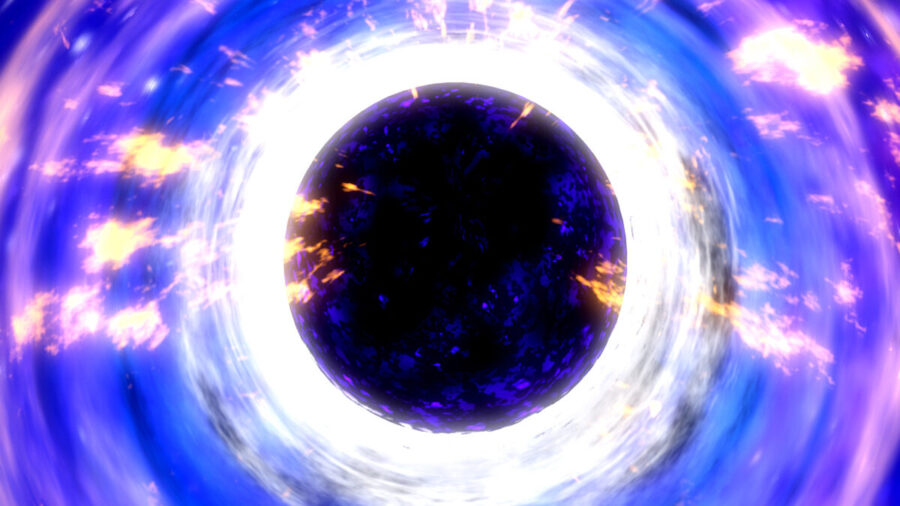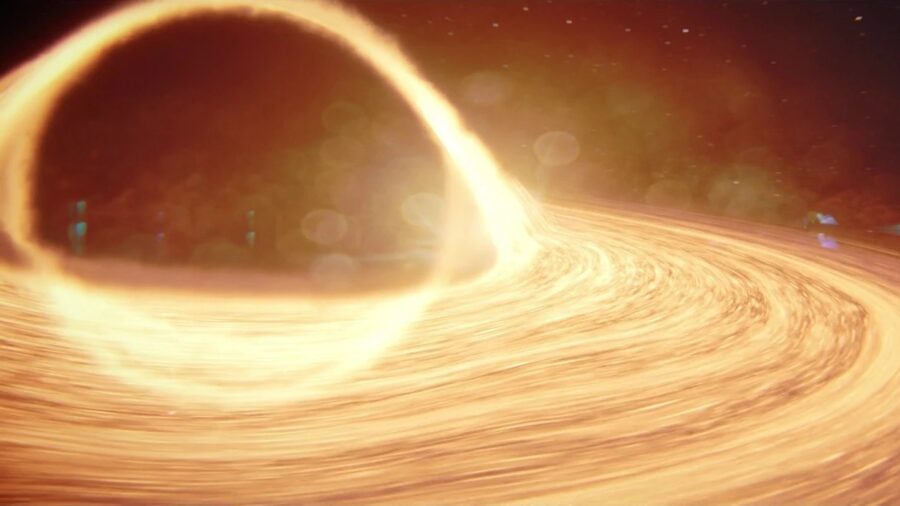A Terrifying Black Hole Has Been Discovered And It’s Bigger Than You Can Imagine
Scientists have discovered a black hole that dates back to shortly after our universe was first formed.

Scientists have discovered a supermassive black hole from the early universe. Using the Atacama Large Millimeter Array (ALMA) radio telescope at an observatory in Chile, the abyss was discovered in the center of an ancient galaxy referred to as COS-87259. The find could change humanity’s understanding of how galaxies are created.
The black hole, which has a mass of one billion, formed 750 million years after the Big Bang, gagadget reports. Astronomers believe similar objects existed in ancient galaxies, but they have yet to discover what causes them to form. The new discovery was made in a small section of sky less than 10 times the size of Earth’s full moon.
Scientists observed the rapidly expanding black hole, hidden behind turbulent stardust, consume part of its accretion disc of orbiting matter. It also released some particles at the speed of light. It seems to be at a rare intermediate growth stage classified as a “dusty, star-forming galaxy and an enormous, brightly glowing black hole known as a Quasar.”
The discovery was published in the Monthly Notices of The Royal Astronomical Society journal. According to the paper, the inexplicably large black hole could be one of thousands that exist behind the clouds of the early universe. Speaking to Live Science, lead study author Ryan Endsley said explaining the existence of approximately 15 quasars that co-existed with COS-87259 was difficult.
“It was challenging for extragalactic astronomy given how short of a time there is to grow such a massive black hole since the Big Bang,” Endsley, who is also an astronomer at the University of Texas, Austin, told the publication. He added that if all “early billion-solar-mass black holes” are more common than scientists believed, it would create further problems.

Meanwhile, researchers have run an experiment simulating the first billion years of the universe. The process demonstrates that clouds of gas evolve into stars, which later die and become black holes. After a while, they blend into each other, which causes more of them to form across the universe.
The only aspect of the formation process that remains a mystery is how they spread across the early universe.
If this mystery is solved, scientists will learn how galaxies formed at the beginning of our universe. This means the black hole discovery made by the Atacama Large Millimeter Array radio telescope could alter the way humanity considers the cosmos. At present, scientists believe it may be due to the rapid formation of stars in COS-87259.
A black hole is a region of space-time with an intense center of gravity. Due to its strength, things like light and electromagnetic waves don’t have enough energy to escape its event horizon. The theory of general relativity states that a “sufficiently compact mass can deform space-time” to form a black hole.
The boundary of no escape is referred to as the event horizon.
According to general relativity theory, black holes have a massive impact on objects that cross their path and are known to have no detectable features. It will be interesting to see what new information the latest discovery will yield for black holes.












